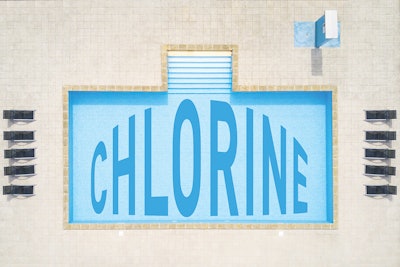6 Ways to Stretch Chlorine

Persistent shortages and price increases of chlorine products have caused pros and consumers alike to sharpen their pencils and expand beyond typical pool treatments. Much of this has led to looking towards alternatives and devices, such as saltwater generators and the addition of secondary sanitizers, such as ozone or UV. The main concern here is to ensure that pools remain sanitized, clear, and safe through a time of supply challenges. Chlorine still remains the best way to keep pools clear and free from bacteria and algae growth, but a closer look at how chlorine works can help us find ways to use it more efficiently.
What Causes Chlorine Demand?
The first thing to address is what causes chlorine loss and ways to reduce the demand that comes from various chemicals or contaminants in the water.
Outdoor pools need stabilizer, a chemical called cyanuric acid (CYA), to protect the free chlorine FC from degradation due to UV sunlight. Unstabilized, unprotected chlorine will be consumed at a rate of 75% within two hours and completely destroyed within four hours from exposure to the sun. The addition of CYA at a level between 30 to 50 ppm will cause the FC in the pool to last eight to 10 times longer, which makes it essential for preserving chlorine in outdoor pools.

